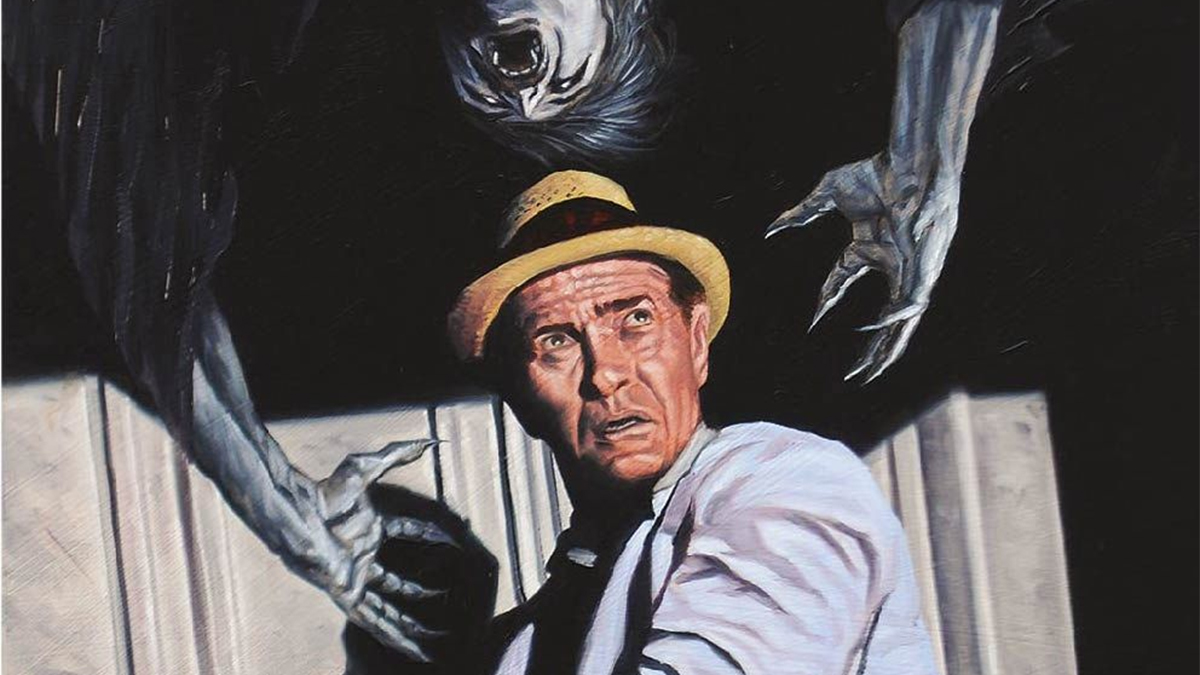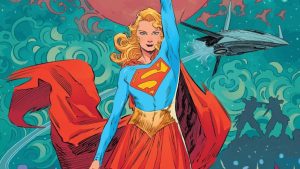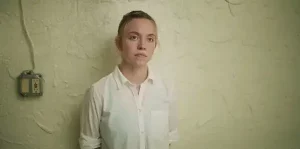
From M.R. James’s lone academics, stalked by ancient horrors, to the grisly cases explored by the Fringe Division: the search goes on for answers to the questions most of us don’t dare ask. The truth is out there, somewhere. It always was.
Twenty years before the X-Files were opened, another intrepid investigator was already on the case. Chasing down ghouls and ghosts, he was the scourge of vampires and werewolves: a thorn in the side of police chiefs and politicians. In a well-worn suit straight out of the ‘50s and his trademark hat, he looked – to loosely quote his long-suffering, perpetually enraged editor, Tony Vincenzo – like an extra from the newspaper comedy, The Front Page. But, funny as he could often be, his work was deadly serious.
You know him, of course, if only by reputation. Carl Kolchak: reporter, monster hunter, and the Independent News Service’s least printed writer.
The 1972 TV movie The Night Stalker – scripted by genre legend Richard Matheson and based on a then-unpublished novel by Jeff Rice – was a huge hit, and a sequel, The Night Strangler, arrived the following year. A one-season TV series, Kolchak: The Night Stalker, aired during the 1974-75 TV season, but its ratings were poor, and star Darren McGavin grew frustrated by the show’s increasingly formulaic “monster of the week” format. He requested to be released from his contract two episodes before the season’s end. Frank Spotnitz’s attempt to reboot the series in 2005 as Night Stalker quickly foundered, while an Edgar Wright-helmed film adaptation starring Johnny Depp seems to be in production purgatory.
Five decades after Carl Kolchak hit the chilly streets of Chicago in pursuit of things supernatural, he’s emerged from the shadows into the spotlight. Having edited a 50th-anniversary graphic novel in 2022, award-winning editor and writer James Aquilone is currently raising funds through Kickstarter for a new comic series, Kolchak Meets the Classic Monsters, in which our Carl will get up close and personal with a werewolf, Frankenstein’s monster, and – at last! – Dracula himself. Aquilone’s also acquired the rights to Rice’s original novel, which got an illustrated special edition in June this year via Monstrous Books. It’s a great time to be a fan of the man in the seersucker suit.
“A Shabby Descendant of Van Helsing and a Spiritual Ancestor to Buffy”
Embodied by the magnificent and inimitable McGavin, Kolchak is a character for the ages. A product of the Watergate era, dressed in the clothes of his mid-century heyday, he’s a man not quite of his time, which makes him all the more suited to his quest. Author and Kolchak expert Mark Dawidziak is currently preparing an updated edition of his Night Stalker Companion for a 2025 release with “a new title, new design and thousands of new words.” When it comes to identifying what makes Kolchak so special, he’s the right man to track down.
“Television is a character-driven medium, and Darren’s Kolchak is one of the all-time great characters. Whenever Darren put on those white sneakers, seersucker suit and bird-feeder hat, something magical happened…every bit as magical as when Peter Falk put on that raincoat and picked up that cigar to play Columbo. And back then, Kolchak was something wonderfully fresh and new for the horror field.
He was a supernatural sleuth but hardly the professorial, Van Helsing type of vampire hunter. He was a down-to-earth, wisecracking, blue-collar reporter. He operated like the kind of hard-boiled detective Darren played in two of his previous series, Mike Hammer and The Outsider. And he’s a character of great determination, dedication and commitment. He tackles both corrupt officials and horrific monsters, always battling long odds and an uncaring world. Yet he never gives up. No matter how many times he’s knocked down, he keeps getting up and roaring back into action. There’s something tremendously appealing about that, and Darren McGavin perfectly embodied those qualities that made Kolchak a kind of shabby descendant of Van Helsing and a spiritual ancestor to such characters as Buffy “the Vampire Slayer,” Fox Mulder of The X-Files, the Men in Black and the Winchester brothers on Supernatural.”
Aquilone has a similar assessment of the key to Kolchak’s appeal. “You mix monsters and Carl’s charisma, and you have a winning formula that never goes out of style. Carl’s pursuit of the truth as a journalist is very endearing in this era of Fake News, and monsters have always endured. They tap into something primal and eternal.”
There’s an even more personal touch to Aquilone’s own enthusiasm for Kolchak and his world. “I first caught Kolchak in late-night reruns in the 1980s. I would go on to get a degree in journalism and work for several newspapers and magazines. I was very attracted to the idea of a writer being a hero. After Carl defeats the monster, he goes off and writes. How cool is that?” Very cool indeed, from where we’re sitting in our desk chairs, armed only with our laptops and mugs of coffee…
Aquilone finds much to enjoy in Rice’s source novel and had fun revisiting it for the new edition. “I found that it still holds up. It’s a great look into the newspaper business of the 1970s. Jeff was a Vegas reporter himself, and the book reads more like non-fiction than a novel. It’s a great read on its own, but for a Kolchak fan, it’s definitely worth it for the extra details. Plus, the new Monstrous Books version adds illustrations by Russ Braun, a foreword by Late Night With the Devil star David Dastmalchian, an afterword by Killadephia writer Rodney Barnes, and a profile on Jeff Rice by Mark Dawidziak.”
Two TV Movies and a Cult TV Series
It’s hard to fault the two Kolchak TV movies, especially The Night Stalker: Matheson’s acerbic humour, the lashings of dark atmosphere, and Bob Cobert’s evocative, jazzy theme frame McGavin’s deliciously witty, laconic performance and showcase two compellingly creepy mysteries. The Night Stalker benefits from Barry Atwater’s terrifying embodiment of Janos Skorzeny, a terrifying yet oddly tragic vampire picking off his prey in the unfeeling streets of Las Vegas, where the lights are bright and the shadows long. Its follow-up, The Night Strangler, takes a banished Kolchak deep beneath Seattle, a city built on layers of history that will prove to be the key to solving the mystery of who is draining murder victims of their blood…
As for the short-lived TV show, there’s a reason it acquired a cult status and captured the imaginations of budding horror writers, most notably Chris Carter. The stories might have got repetitive, and the focus on humour over horror might not always have hit the mark. At its best, though, Kolchak: The Night Stalker ranks with the very finest the genre has to offer. Dawidziak’s pick of the episodes is one that tops most fans’ lists: the devastating tale of a beleaguered Jewish community living in dread of a killer that seems to embody anti-Semitic hatred. Featuring the legendary Phil Silvers, “Horror in the Heights” is about as good as TV gets. “There weren’t many actual horror writers working on the series, but Hammer veteran Jimmy Sangster wrote “Horror in the Heights”, and it gives us the gripping idea of a monster that comes to its victims in the form of the people they most trust. Just a great horror concept.”
Aquilone adds a few more recommendations for new viewers. “I recommend first watching the two movies — The Night Stalker and The Night Strangler. It’s hard to top the Richard Matheson scripts. As far as the TV show, I think the best episodes are “The Ripper,” “Zombie” and “Horror in the Heights.” But it’s “Firefall” that I find to be the creepiest. That doppelgänger still makes my skin crawl.” A grisly tale of apparently spontaneous human combustion, “Firefall” is a lesser-known chiller centred on Fred Beir’s memorable performance as a classical-music conductor menaced by his own leering image, as those close to him are inexplicably reduced to dust and smouldering ash.
The TV show has a charm all of its own; even when that week’s monster fails to pass muster, it’s endlessly watchable thanks to its sterling cast. Simon Oakland (Vincenzo) is the only actor to rejoin McGavin from the two movies, and their often hilarious banter is a consistent joy. The cast is rounded out by Kolchak’s coworkers at INS: his nemesis Ron Updyke (the wonderful Jack Grinnage), much-maligned nepotism hire Monique Marmelstein (Carol Ann Susi), and advice columnist Miss Emily (Ruth McDevitt), who has the honour of being the one person Kolchak trusts. Say it quietly – who knows what evil you might summon – but the prospect of spending an episode in this gang’s company without a hint of the supernatural in sight would be a very welcome prospect.
An Influence on Everything from The X Files to Supernatural
It’s that strange mix of the comic and the bloodcurdling that makes Kolchak: The Night Stalker so memorable: encapsulated by Gil Mellé’s theme tune which begins with Kolchak’s jaunty whistle (his first mistake, as M.R. James would have been quick to point out…) before taking a sudden plunge into the dark, as a sinister presence enters the INS office. The show’s writing talent’s also worth a mention; it included a number of names that would end up becoming touchstones in screen history, both big and small. Robert Zemeckis and Bob Gale gave us “Chopper”, with its headless biker terrorising his old foes, while David Chase was writing about mobsters in “The Zombie” way before Tony Soprano entered the pop-cultural pantheon. In terms of guest stars, Bond icon Richard Kiel lends his unique physicality to several of Kolchak’s unearthly foes, while Scatman Crothers and Antonio Fargas pop up in “The Zombie” and a pre-Alien Tom Skerritt takes centre stage as a corrupt politician who’s sold his soul to Satan in “The Devil’s Platform”, an episode that takes the murkier elements of Chicago’s politics down some very dark paths.
But beneath the gags and gore, there’s something deeper. As with all good horror, the human element is often present: in the heartbreaking deaths of “Horror in the Heights”, or in a motorbike salesman’s revelation that the Japanese company responsible for his wares also built the planes that shot him down in World War Two (a fine performance from Jim Backus). Then, of course, there’s “Mr. R.I.N.G”, a sinister account of a government cover-up that sets the tone for The X-Files, with its secret robotics project and its relentless G-men.
Dawidziak emphasises the profound impact Kolchak: The Night Stalker had on the horror genre, which cannot be overstated. “There is this generation that watched the original movie in January 1972, and they grew up to make the horror films and TV shows of the late 1980s and the ’90s. Almost all of them cited the Kolchak influence. You then see it rolling into the next century, an acknowledged influence on everything from Supernatural to Penny Dreadful. So much horror on all fronts – film, TV, books, graphic novels, video games – has either been directly influenced by Kolchak or influenced by things he inspired. There’s no getting around the impact of that first movie, the series and, of course, the character.”
It’s no surprise that McGavin was approached to appear in The X-Files at Chris Carter’s request, though he proved hard to pin down to a role. He did, however, eventually come on board in the role of Arthur Dales, a friend of Mulder’s father and the so-called “father of the X-Files”. It was a fitting tribute to the man who embodied Carl Kolchak. Without him, and Jeff Rice’s brilliant concept, the horror genre would look very different indeed.
So this Hallowe’en, enjoy your favourite scary story, and, as you settle down to sleep, try to tell yourself: wherever you may be, it couldn’t happen here. Could it? Better hope to hear that familiar whistle, somewhere close at hand… A certain gentleman of the press just might be our only hope.
Kolchak: The Night Stalker season one is available to buy on Prime Video in the UK and to stream on Peacock in the US. Read more about the Kolchak comics Kickstarter here.
The post Kolchak: The Night Stalker at 50 – A Character Who Changed the Horror Genre Forever appeared first on Den of Geek.






